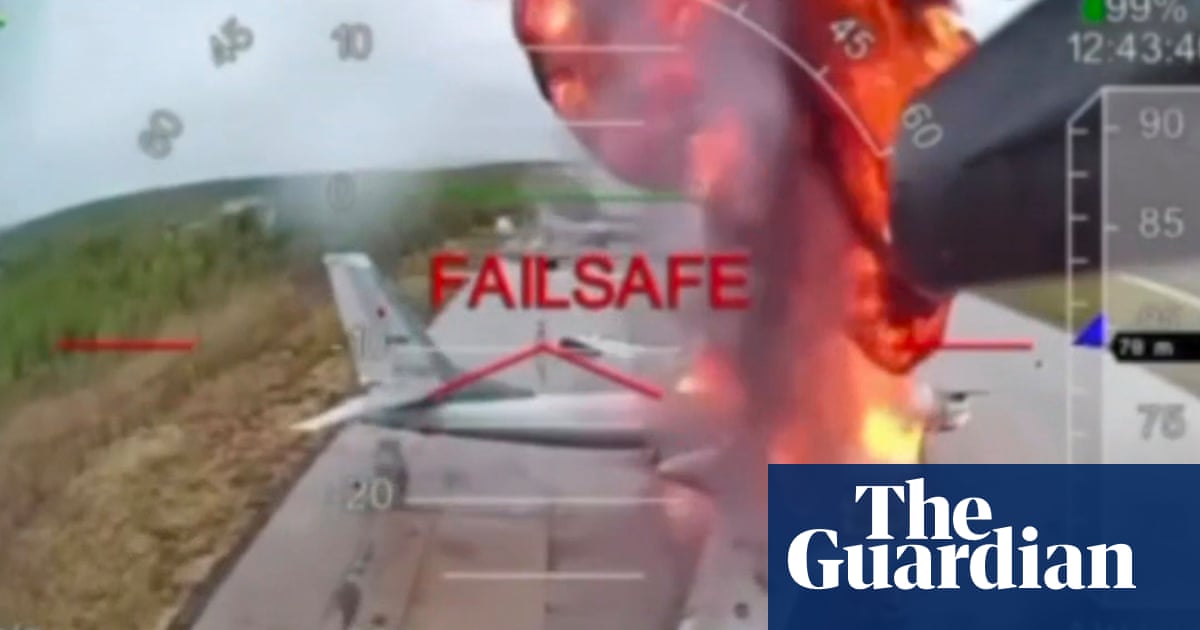Are drone attacks like the “Spiderweb” operation a glimpse into the future of warfare? This article unpacks the drone revolution and its impact on military strategies, exploring how readily available technology is reshaping conflict. Discover the emerging trends in drone warfare, from asymmetric tactics too the integration of cyber and electronic warfare, and understand the geopolitical implications of this rapidly evolving landscape.
The Future of Warfare: Unpacking the Drone Revolution
The recent Ukrainian drone attacks on Russian airbases, including those deep within Russian territory, mark a pivotal moment in modern warfare. This operation, dubbed “Spiderweb,” showcases the evolving landscape of conflict, where innovative tactics and readily available technology are reshaping military strategies.Let’s delve into the potential future trends emerging from this conflict.
The Rise of Asymmetric Warfare
The “Spiderweb” operation exemplifies asymmetric warfare, where a weaker force leverages innovative strategies to challenge a stronger adversary. Ukraine, facing a militarily superior Russia, has effectively utilized drones to inflict significant damage. This approach minimizes direct confrontation, reducing casualties while maximizing impact. This trend is likely to continue,with smaller nations and non-state actors increasingly adopting drone technology to level the playing field.
Pro tip: Keep an eye on advancements in drone swarm technology. The ability to deploy coordinated attacks with multiple drones concurrently will further amplify the impact of asymmetric warfare.
Stealth and Deception: The New Battlefield Norm
The success of the “Spiderweb” operation hinged on stealth and deception. Drones were smuggled into Russia disguised as everyday objects, evading detection untill the moment of attack. This highlights the growing importance of camouflage, concealment, and misinformation in modern warfare. Future conflicts will likely see increased investment in technologies that enhance stealth capabilities, such as advanced materials, electronic warfare, and cyber deception.
Did you know? The use of commercial-off-the-shelf (COTS) drones, modified for military purposes, is a growing trend. This allows for rapid deployment and cost-effectiveness, making advanced technology accessible to a wider range of actors.
The Expanding Role of Unmanned Systems
The “Spiderweb” operation underscores the expanding role of unmanned systems in modern warfare. Drones are no longer limited to reconnaissance; they are now capable of carrying out complex offensive missions. This trend will accelerate, with advancements in drone technology leading to increased range, payload capacity, and autonomy. We can expect to see more elegant drone systems capable of operating in diverse environments, including urban areas and contested airspace.
case Study: The Nagorno-Karabakh conflict in 2020 demonstrated the devastating impact of armed drones. Azerbaijan’s use of Turkish-made Bayraktar TB2 drones significantly altered the course of the war,highlighting the potential of unmanned systems to achieve decisive military outcomes.
Cyber warfare and Electronic Warfare Integration
The “Spiderweb” operation likely involved sophisticated cyber and electronic warfare tactics. Disrupting enemy communications, jamming radar systems, and spoofing GPS signals are crucial for ensuring the success of drone operations. As drone technology becomes more advanced, the integration of cyber and electronic warfare capabilities will become even more critical. Future conflicts will likely see a greater emphasis on protecting drone systems from cyberattacks and developing countermeasures to neutralize enemy drones.
The Human Element: training and Expertise
While drones are unmanned, the human element remains crucial. The “Spiderweb” operation required skilled drone operators, intelligence analysts, and logistics personnel. As drone technology becomes more complex, the demand for highly trained personnel will increase. Military forces and private companies will need to invest in training programs to develop the expertise required to operate and maintain these advanced systems effectively.
Geopolitical Implications and the Future
The “Spiderweb” operation has significant geopolitical implications.It demonstrates the vulnerability of even the most advanced military assets to asymmetric attacks. This could lead to a reassessment of military strategies and a greater emphasis on protecting critical infrastructure. The proliferation of drone technology also raises concerns about the potential for escalation and the need for international regulations to govern the use of these systems.
FAQ: Drone Warfare
- What is asymmetric warfare? A strategy where a weaker force uses unconventional tactics to challenge a stronger adversary.
- what is FPV technology? First-person view technology allows drone operators to see what the drone sees in real-time.
- What are COTS drones? Commercial-off-the-shelf drones are readily available drones adapted for military use.
The “Spiderweb” operation is a harbinger of the future of warfare. As drone technology continues to evolve, we can expect to see even more innovative tactics and strategies. The ability to adapt and innovate will be crucial for success in the conflicts of tomorrow.
What are your thoughts on the future of drone warfare? Share your comments below!

